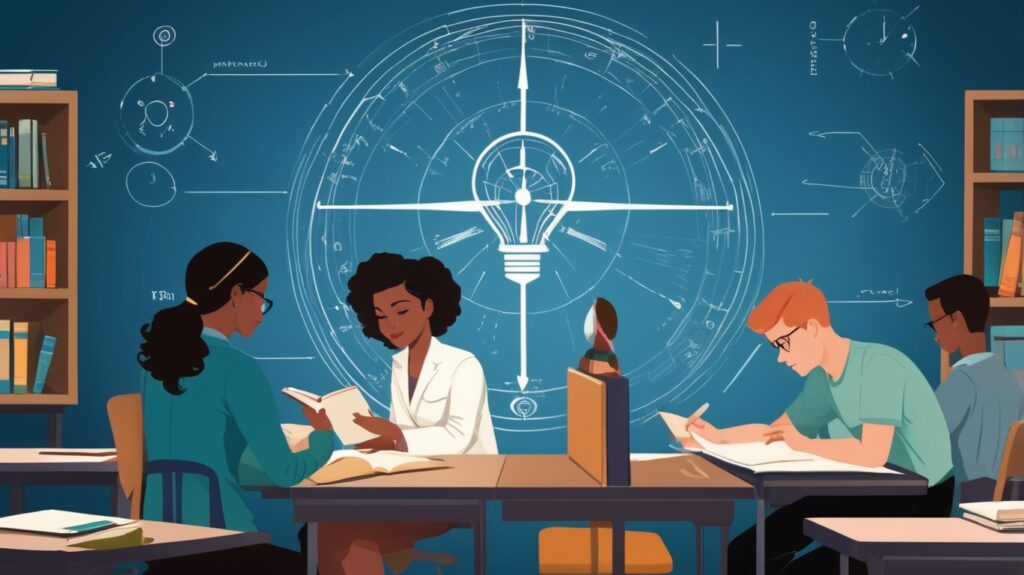AI in schools is the upcoming trend; it changes the way students were accustomed to learning. Integrating AI will heighten the productivity of educators and students alike, reaping better outcomes. AI makes students wiser: it provides personalized learning, targeting each learning style, and shows them information and data that will help them understand the material much better.
In this blog, we look at how AI contributes to making education both more effective and efficient.

- Personalized Learning
Think about having a class where each and every single student gets an opportunity to learn with his very own pace and in a specific way. For instance, some students may head for visual aids to learn a concept, while another student fares well with interactive activities. This is the notion of personalized learning, which can be of great benefit to the students.
AI in schools helps students through customized learning pathways by making analyses of data on each student’s strengths and weaknesses to come up with customized learning plans that will answer to their needs. This means each student gets the support and guidance needed to reach his or her full potential.
Personalized learning has a number of advantages. First, scholars are able to master generalities before advancing to new material, thus preventing them from falling behind. Further, an engaged student generally will develop into a lifelong lover of learning, hence able to meet life’s challenges. Artificial intelligence keeps students motivated and tuned in through personalized learning, hence success.
With personalized learning, therefore, one finds the perfect way of having students obtain an appropriate education, put in relation to their needs and how they learn best. The fact that AI allows educators to extend this kind of learning experience to all students is a huge win for both students and teachers alike.
- Student Engagement and Motivation
Some of the greatest challenges that teachers face relate to creating involvement and motivation among their students in class. Building and holding attention within one large class is not easy. However, it is at this point that AI steps in and shows how it can really improve education.
AI can personalize learning for every individual student by making it more relevant and interactive, according to needs and ways of learning. Using machine learning algorithms, AI collects data on each student’s performance and preferences to construct an individualized curriculum. This alone can increase engagement and help provide the motivation to learn.
Can AI further contribute to student engagement and motivation?
Definitely! AI is a good assistant in that it can also:
Provide immediate feedback and recognition and make the learning experience more fun and interactive. Such positive reinforcement is one of the best ways to motivate the students whereby good results in classrooms are attained.
Create areas where there will be peer collaboration and learning within the classroom. This would make the classroom experience rather interesting and social for the students as they can work on group projects and share their ideas enhancing social skills and teamwork abilities.
In addition, AI will provide for increasing the level of student participation in lessons and motivating them to learn, which may lead to higher learning outcomes. This is so crucial in today’s day and age, seeing how students are exposed to technology almost each and every second in life. Integrating AI into education allows the student to have a more current and relevant learning environment.
- Early Detection of Learning Gaps
Learning gaps occur when there is some sort of failure in the mastery of a particular concept or skill. This could be attributed to one or several causes, including lack of practice, poor prior knowledge concerning the subject matter at hand, or just flawed teaching strategies all over. Unless something is done to address this issue, the so-called learning gaps make further progress even difficult and perhaps impossible. They may even foster a negativism toward learning in general, leading eventually to disengagement and possibly dropping out of school.
Thankfully, AI has made this process of detecting learning gaps well before they scale into much bigger gaps much easier.
How does AI function as a learning gap detector?
Let’s go through the workflow flow to gain some understanding of how AI can ensure that in-school teachers quickly identify and help students fill up their learning gaps.
Student has learning gaps: Poor practice, inadequate foundational knowledge, etc.
AI identifies the learning gap: Through analysis of student performance data, it pinpoints areas of weaknesses where they are struggling-repeated mistakes or inconsistency of answers.
AI gives suggestion for improvement and solution: It would suggest how to improve it through feedback and adaptive learning activities to overcome the weaknesses.
Linked to the curriculum will be adaptive learning software that tailors an individual experience for each student. AI will sort individual student performance to determine precisely which particular subjects need to be instructed further. In this way, every single student will get the attention and support needed to learn the curriculum at their own pace.
Basically, this will help in the identification of learning gaps early so that students can have a strong foundation. AI is good at the identification of such gaps and providing appropriate support. AI-powered tools support teachers in deeper understanding and provide insights into students’ strengths, weaknesses, and chiropractically framing plans for personalized learning that help each student attain success.
- Increasing Teacher Productivity
Traditionally, a lot of teachers’ preparation goes into lesson planning, grading assignments and tests, and providing individual feedback. However, the incorporation of AI technology in education can further make the role of teachers highly effective and productive. Following is how AI increases teacher productivity:
Automated grading and feedback: AI-powered grading systems save hours by grading and analyzing assignments and assessments automatically. AI instantly gives feedback to students, freeing the teacher for more personalized teaching.
Lessons plans and materials automatically generated: AI technology can help teachers develop personalized lesson plans aimed at meeting the particular needs and learning styles of each student. This saves a great deal of time and improves student achievement by focusing on weaknesses that may need improvement.
Improved data analysis: through the use of AI, real-time analysis of a lot of data on student performance is facilitated for teachers to identify trends and learning gaps immediately. In this way, teachers can tailor their teaching strategies and give extra support when needed.
Integration of AI into education may, therefore, completely revolutionize the way teachers approach lesson preparation and delivery. By automating routine activities and providing valuable insights into the performance of students, AI makes teachers more productive and effective in delivering quality learning outcomes for students. This is how AI enhances education and makes the process of learning more effective for both students and instructors alike.

